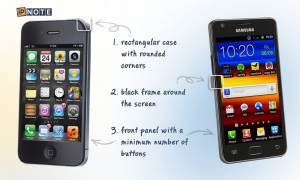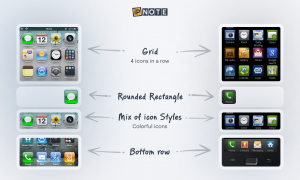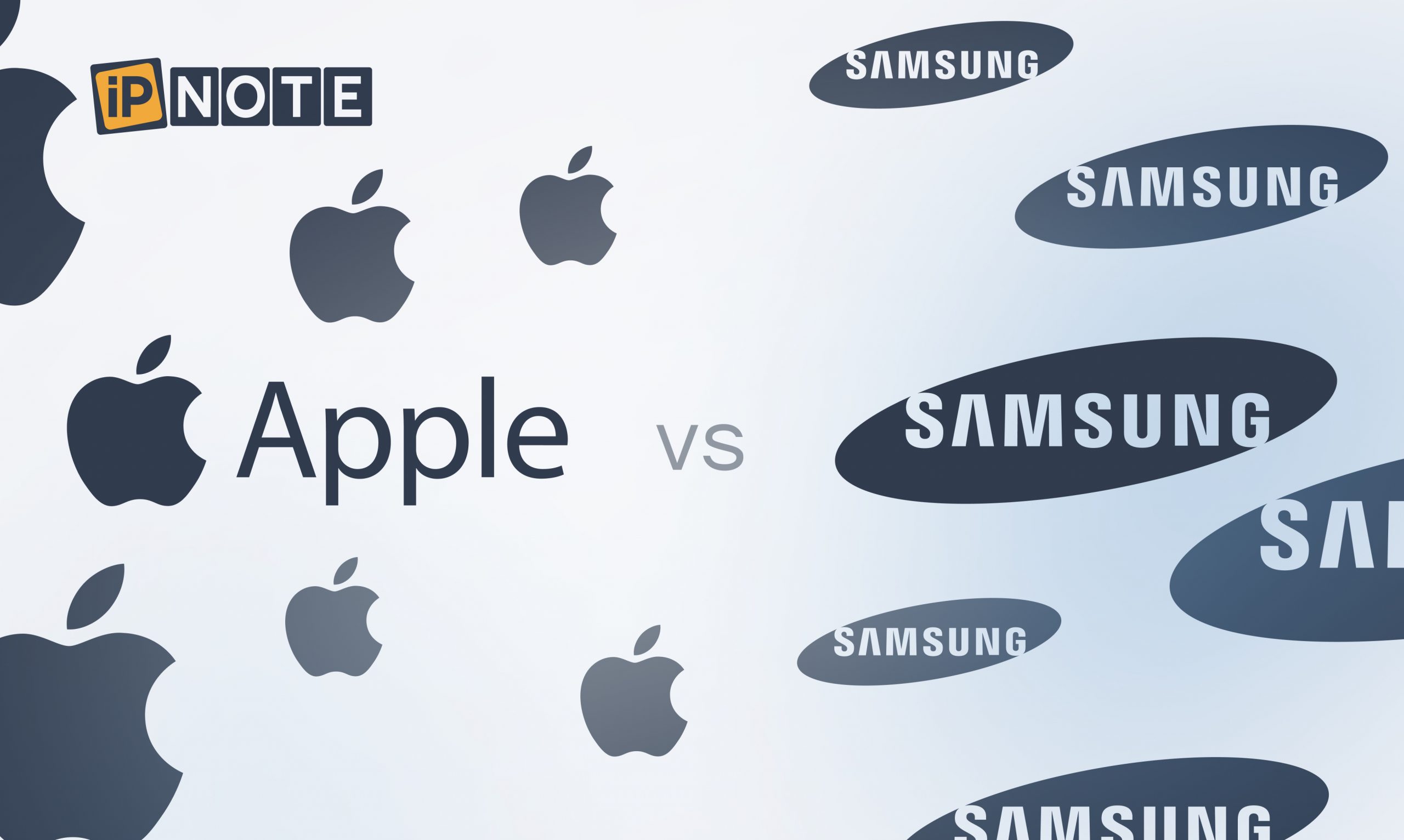In this article, we will explore the technologies that became the center of a high-profile legal dispute and how this conflict reshaped the rules for tech companies, developers, and entrepreneurs. Additionally, we will share a checklist to help you avoid patent wars and protect your business.
The Turning Point in Tech Patent Wars
When one of the largest patent wars in technology history concluded in 2018, the world witnessed more than just the end of a high-stakes lawsuit. This legal battle became a defining moment for the entire industry, demonstrating that intellectual property protection is not just a legal formality but a powerful strategic tool capable of shifting market dynamics. After seven years of courtroom battles, Apple emerged victorious, securing a $539 million payout from Samsung for patent infringement. But was it truly a win, considering the immense time and resources spent on the fight?
The Apple-Samsung conflict was no accident. Both companies were dominant players in the smartphone market, competing not just for sales but also for the right to be recognized as pioneers in mobile technology. Apple claimed that Samsung deliberately copied its innovations, including the iPhone’s design, interface, and touch gestures. Samsung, on the other hand, argued that Apple itself had violated its patents related to communication and data transmission technologies. This dispute extended beyond the two companies, raising fundamental questions about intellectual property rights and drawing a crucial line between inspiration and imitation.
What Technologies Were in Dispute?
The legal battle between Apple and Samsung was one of the most extensive conflicts in tech industry history, centering around key elements that define the smartphone user experience. Apple asserted that Samsung did not merely draw inspiration from its products but intentionally copied its design, interface, and gestures, creating devices that closely resembled the iPhone. Samsung countered that it employed universal design solutions that could not be patented and accused Apple of attempting to monopolize fundamental aspects of the user experience.
iPhone Design Copying
One of Apple’s primary allegations was that Samsung copied the signature look of the iPhone. Apple argued that Samsung’s smartphones replicated several key design elements, including a rectangular body with rounded corners, a flat front panel with minimal buttons, and a distinctive black frame around the screen, which created the effect of a seamless glass device. Apple claimed that these features were part of its unique visual identity, first introduced with the original iPhone in 2007.
Apple specifically pointed to Samsung models such as the Galaxy S, Galaxy S II, Galaxy Ace, Captivate, and Vibrant as clear examples of design infringement. The court agreed that Samsung’s devices bore notable similarities to the iPhone’s design.

iPhone 4 vs Samsung Galaxy S II
Samsung, of course, countered with its own arguments. The company contended that a rectangular shape with rounded corners was not unique and that other manufacturers, including Sony and LG, had used similar designs before the iPhone was introduced. Samsung also emphasized differences in design details, such as button placement and speaker shapes.
However, the court sided with Apple. It ruled that the visual similarity between Samsung smartphones and the iPhone could mislead consumers, leading to the conclusion that Samsung had infringed Apple’s design patents D618,677 and D593,087.
Dispute Over User Interface and Icons
Another major point of contention was Apple’s claim that Samsung copied its user interface design. Specifically, Apple objected to Samsung’s use of a grid-based icon layout with rounded corners, a signature feature of iOS. Apple argued that Samsung’s implementation of a similar interface in its smartphones was an intentional effort to create a visual resemblance to the iPhone.
As evidence, Apple presented Samsung models such as the Galaxy S II, Infuse 4G, and Droid Charge, whose interfaces closely resembled iOS.
Samsung countered by stating that grid-based icon layouts were not exclusive to Apple, as similar designs had been used in computer operating systems long before the iPhone. Moreover, Samsung emphasized that its devices ran on Android — a completely different operating system with its own unique interaction elements.

iPhone and Samsung interface
Despite these arguments, the court ruled in favor of Apple, finding that Samsung had violated Apple’s design patent D604,305, which protected the user interface design.
Gesture Controls: Bounce-Back and Pinch-to-Zoom
Beyond design and interface, Apple accused Samsung of unlawfully using two key gesture controls: the bounce-back effect when scrolling and the pinch-to-zoom function.
The bounce-back effect made scrolling feel more natural — when a user scrolled to the end of a page, the screen would slightly bounce back, creating a smooth visual effect. This feature became a hallmark of iOS, and Apple found Samsung’s implementation strikingly similar.
Another disputed technology was pinch-to-zoom, allowing users to zoom in and out by pinching or spreading their fingers on the screen. Apple argued that it pioneered this intuitive touchscreen interaction and had patented it under U.S. Patent No. 7,844,915.
Apple provided evidence that these technologies were used in Samsung models such as the Galaxy S, Nexus S, Epic 4G, and Galaxy Tab.
Samsung responded by arguing that effects similar to bounce-back existed before the iPhone and that Apple was attempting to patent overly broad concepts. The company also claimed that Android devices employed their own gesture-processing algorithms distinct from iOS.
This aspect of the dispute was particularly complex. While the court initially found Samsung guilty of infringing the bounce-back patent, the U.S. Patent Office later invalidated the patent, determining that Apple was not the first to introduce the concept. However, this did not overturn the court’s ruling, and Samsung was still required to pay Apple part of the compensation for using the technology.
The Financial Battle: Compensation Timeline
The compensation amount Samsung had to pay changed multiple times throughout the legal battle:
- August 2012 – $1.05 billion: A California jury ruled that Samsung infringed Apple’s patents and awarded over $1.05 billion in damages.
- March 2013 – $929 million: Judge Lucy Koh reduced the amount by $450 million due to miscalculations in the initial ruling.
- May 2014 – $548 million: After another appeal, the amount was further reduced, and Samsung agreed to pay $548 million.
- December 2016 – U.S. Supreme Court Sided with Samsung: The court ruled that damage calculations should only consider the elements of the devices that copied Apple, not total smartphone sales revenue.
- May 2018 – $539 million: A California court finalized the compensation at $539 million, higher than the previous ruling but significantly lower than the original $1.05 billion.
- June 2018 – Settlement: The companies reached a final agreement, closing the case. While the exact settlement amount remains undisclosed, reports suggest it was around $539 million.
In the end, Samsung successfully reduced the initial fine from $1.05 billion to $539 million — nearly cutting it in half through appeals and a U.S. Supreme Court review.
Lessons Learned: What This Case Teaches Us
The Apple-Samsung legal battle serves as a clear example that patent wars are not just legal disputes between tech giants but powerful tools for competitive strategy, capable of costing billions and lasting years. For technology companies, this case is a lesson: protecting intellectual property is not a formality but a crucial business strategy that impacts financial stability and market leadership.
Apple demonstrated that even seemingly minor details — from device shape to interface gestures — can become the subject of legal battles and yield substantial compensation. Samsung, on the other hand, learned that even the largest corporations are not immune to prolonged legal disputes if they do not ensure the legal integrity of their innovations.
This case also highlights the complexities of patent law. Without strong legal support, predicting all possible risks is nearly impossible — one lawsuit can undo years of work and result in massive financial losses.
Final Takeaway: Protecting intellectual property is not optional—it is a fundamental part of business strategy. The sooner you secure your rights, the lower the risk of future disputes. With iPNOTE, the patenting process is accessible and hassle-free. Register now and safeguard your innovations without unnecessary expenses and bureaucracy!






